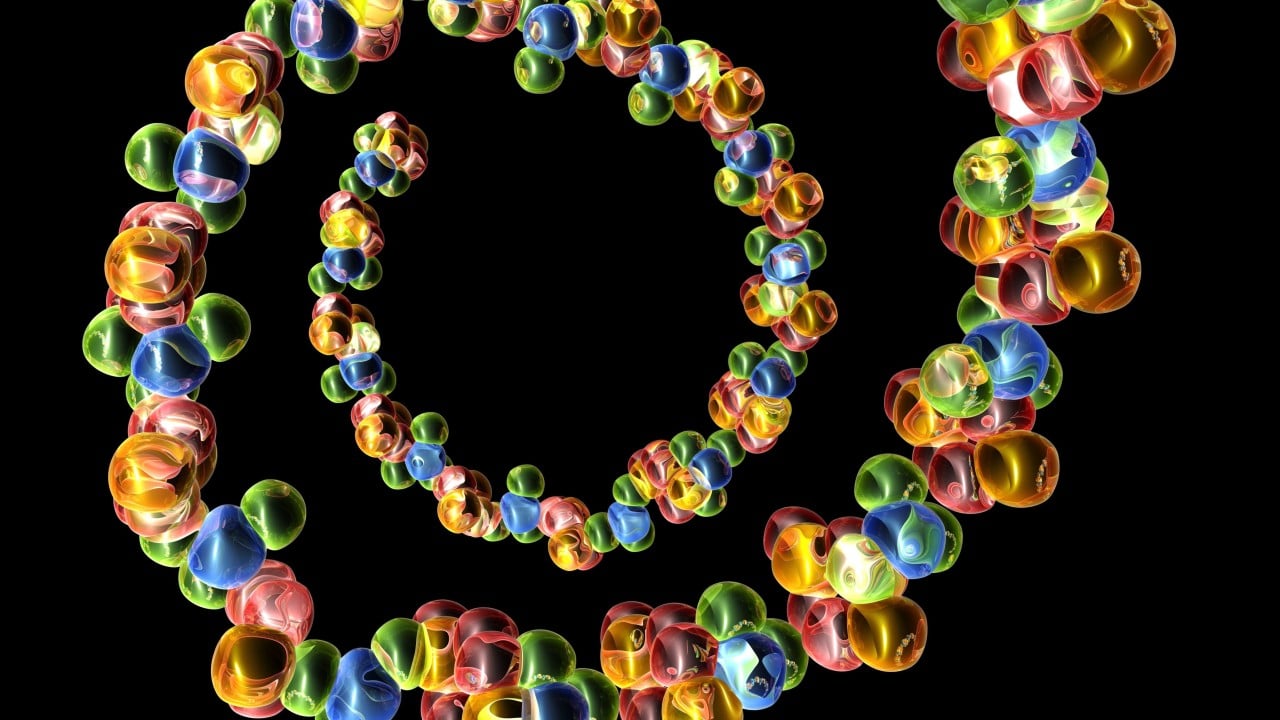Chinese scientists have successfully used RNA to precisely gene-edit mammalian cells – something that could be used to develop safer, more effective and lower-cost gene therapies.
RNA, or ribonucleic acid, is one of three macromolecules along with DNA and proteins that are key to many processes in the body.
“We realised all-RNA-based, targeted, full-length functional gene integration in mammalian cells by developing new gene integration tools from naturally occurring [genetic elements known as] retrotransposons,” the researchers from the Chinese Academy of Sciences wrote in a paper published in the peer-reviewed journal Cell on July 8.
Gene integration is a targeted gene-editing method in which an entire gene of interest is inserted into a target genome, allowing cells to generate a desired protein. It can be used to treat diseases in which production of a protein is impaired.
The development of CRISPR-based gene-editing systems has pushed forward technology but finding a way to efficiently integrate large DNA fragments on a gene scale into genomes “remains a challenge”, study author Li Wei told state-run Science and Technology Daily.
Most gene-editing systems rely on DNA donors – such as plasmids or viral vectors – to carry a gene of interest into a cell so that it can be integrated into the host genome.
But RNA donors offer advantages over DNA donors, including a lower risk of provoking an immune response and the ability to be delivered by non-viral vectors like nanoparticles, which degrade rapidly in the cell and lead to a lower risk of non-intended gene integration.
“Therefore, the technology of precise large-fragment insertion mediated by RNA has significant advantages in terms of safety and deliverability,” said Li, a professor at the CAS Institute for Stem Cell and Regeneration in Beijing.
Retrotransposons are mobile elements which can move into a host genome by converting RNA into DNA within the cell using reverse transcription. R2 retrotransposons are one type found naturally in the genomes of many organisms that have some unique properties.
They include the ability to insert into a specific DNA sequence, allowing them a high specificity. They can also multiply autonomously, allowing them to distribute widely.
“R2 retrotransposons have great potential for development into next-generation gene integration tools; however, few studies have systematically explored the properties of R2 elements in mammalian cells,” the researchers wrote.
When studying R2 elements, one barrier they came across was that the retrotransposons had “little to no ability to insert genes” in a different cell environment than the source, which could be a result of natural selection.
The team found that by leveraging protein engineering through evolutionary data and artificial intelligence, R2 retrotransposons could be used to achieve “effective gene integration into human cells via all-RNA delivery”.
“Importantly, the all-RNA-delivered engineered R2 system showed effective integration activity, with efficiency over 60 per cent in mouse embryos,” and 99 per cent on-target integration specificity, the team said.
“Furthermore, systematic high-throughput evaluation revealed that our final engineered R2 gene integration tool has high specificity in human cells.”
The engineered R2 tools are able to perform hit-and-run targeted DNA integration, or permanent modification of a target sequence without leaving behind foreign genetic material.
“We anticipate that the R2 tools can extend the applications of gene addition technologies and facilitate the generation of novel gene therapeutics,” the team wrote.
They noted that as a new technology, further studies would need to be done to characterise the tools, including for mutation potential.
They also emphasised that the RNA donor-based integration technology would not replace DNA donor-based technologies, which can be used to insert long DNA fragments.
“Instead, the advantages of deliverability and accuracy put R2 systems in a unique technological niche and have also been explored in mammalian cells from a different pathway,” the team said.


